The national flag of Kazakhstan is a powerful and visually striking symbol that encapsulates the rich history, cultural heritage, and aspirational future of this vast Central Asian nation. Adopted in 1992, shortly after gaining independence from the Soviet Union, the flag represents the sovereignty, unity, and unique identity of the Kazakh people. Its design is a blend of traditional motifs and modern symbolism, creating an emblem that resonates deeply with its citizens.
Design and Dimensions
The flag of Kazakhstan features a sky-blue field, representing the vast skies, peace, and prosperity. In the center of the flag, a stylized golden sun with 32 rays is depicted, symbolizing life, energy, and wealth. Below the sun, a soaring golden steppe eagle is positioned, representing power, insight, and independence. Along the hoist (left) side of the flag, a vertical band of traditional ornamental patterns (koshkar-muyiz, or ram's horn motif) in gold is featured.
The official proportions of the Kazakh flag are typically 1:2 (height to width), giving it a classic rectangular shape. This symmetrical design ensures that all elements are prominently displayed and easily recognizable.
Symbolism of the Colors and Elements
Every element and color on the Kazakh flag is imbued with profound symbolic meaning, carefully chosen to reflect the nation's values, geography, and aspirations:
-
Sky-Blue Field: The dominant sky-blue color of the flag holds multiple layers of significance. It primarily symbolizes the endless clear skies over Kazakhstan, reflecting peace, tranquility, and harmony. For the Turkic peoples, to whom the Kazakhs belong, blue is also a sacred color, representing the sky god, Tengri, and eternal life. It further denotes unity and the common aspiration of the people of Kazakhstan to live in peace, friendship, and solidarity. It's a color often associated with boundless space and a bright future.
-
Golden Sun with 32 Rays: The golden sun in the center of the flag is a powerful symbol of life, energy, wealth, and abundance. Its circular shape signifies the perfection and eternity of life. The 32 rays radiating from the sun are highly symbolic. While some sources link them to the 32 elements in the periodic table or the 32 states of a unified Kazakh Khanate (a historical and somewhat legendary interpretation), the more widely accepted meaning is that they represent the diversity and unity of all peoples living in Kazakhstan, as well as the nation's future prosperity and progress. Gold is also traditionally associated with wealth, wisdom, and success.
-
Golden Steppe Eagle: The majestic golden steppe eagle soaring beneath the sun is a potent and ancient symbol in Kazakh culture. It represents power, independence, foresight, and courage. For the nomadic peoples of the steppes, the eagle was a revered bird, embodying freedom and the ability to achieve great heights. Its outstretched wings signify the strength and aspirations of the young independent state to build a bright future and achieve its goals. It also highlights the historical and cultural ties of the Kazakh people to their nomadic heritage and the vast steppes.
-
Golden Ornamental Pattern (Koshkar-Muyiz): The vertical ornamental pattern on the hoist side, in gold, is a distinctive feature of Kazakh national identity. This pattern, known as "koshkar-muyiz" (ram's horn), is a traditional motif widely used in Kazakh applied arts and culture. It symbolizes the rich cultural heritage, traditions, and the artistic expression of the Kazakh people. The presence of this national ornament emphasizes the unique ethnic identity of the nation and its deep roots in its historical past, serving as a protective and symbolic border.
History of Creation and Adoption
Before its independence, Kazakhstan, as the Kazakh Soviet Socialist Republic, used variations of the Soviet Red Flag, featuring Soviet symbols and the hammer and sickle. With the dissolution of the Soviet Union in 1991, the newly independent Republic of Kazakhstan embarked on the process of creating its own national symbols, including a flag that would authentically represent its unique heritage and aspirations.
A nationwide competition was held to solicit designs for the new flag. Out of many submissions, the design by Shaken Niyazbekov (Шәкен Ниязбеков), a prominent Kazakh artist, was chosen. Niyazbekov's design beautifully incorporated elements that were deeply meaningful to the Kazakh people, reflecting both their historical roots and their hopes for the future.
The flag was officially adopted on June 4, 1992, by the Supreme Council of the Republic of Kazakhstan. This date marks a pivotal moment in the nation's history, symbolizing its definitive break from the Soviet past and the establishment of its own sovereign identity on the world stage. The adoption of the flag was met with great national pride, as it provided a tangible symbol of Kazakhstan's newfound independence and its commitment to building a unique national character.
Significance for the Inhabitants
For the citizens of Kazakhstan, the flag is a profound source of national pride, unity, and a sense of shared identity. It embodies their hard-won independence and the vast potential of their nation. The sky-blue color resonates with the concept of a peaceful and free existence under a vast, open sky, a significant aspect of the nomadic heritage. The sun and eagle symbolize the vitality, strength, and aspirations for prosperity and a bright future.
The traditional ornament speaks to their deep cultural roots and respect for heritage, connecting modern Kazakhs to their ancestors and the timeless traditions of the steppes. During national holidays, sporting events, and official ceremonies, the flag is displayed with immense reverence, serving as a powerful reminder of the sacrifices made for independence and the collective vision for a strong, unified, and prosperous Kazakhstan. It fosters a sense of belonging and inspires patriotism among all ethnic groups residing in the country.
Interesting Facts
-
Only Central Asian Flag with a Nomadic Motif: The Kazakh flag is unique among Central Asian flags for its prominent display of the golden steppe eagle and the traditional ram's horn ornament, directly referencing its nomadic heritage.
-
Turkic Blue: The sky-blue color is not just symbolic of the sky but also a deep historical reference to the color traditionally associated with various Turkic peoples and states throughout history.
-
Designer's Vision: Shaken Niyazbekov's inspiration for the flag came from his desire to create a symbol that was both modern and deeply rooted in Kazakh tradition, embodying the spirit of freedom and the vastness of the steppe.
-
The 32 Rays of the Sun: While the exact interpretation of the 32 rays varies, it's widely accepted that they symbolize the unity and diversity of Kazakhstan's multi-ethnic population.
-
High-Flying Ambition: The image of the soaring eagle beneath the sun is often interpreted as Kazakhstan's ambition to reach new heights and achieve global recognition.
-
Young Nation, Ancient Roots: The flag effectively bridges the identity of a newly independent nation with its ancient nomadic and Turkic roots, creating a sense of continuity.
-
One of the Largest Countries by Area: Kazakhstan is the world's ninth-largest country by land area, and its flag, with its expansive blue field, visually conveys this vastness.
-
State Symbolism Law: Kazakhstan has specific laws regulating the use and display of its state symbols, including the flag, underscoring its profound national significance.
In the demonstration images, full-size flags are shown with proportions of 2:3, and hand-held flags with proportions of 1:2.
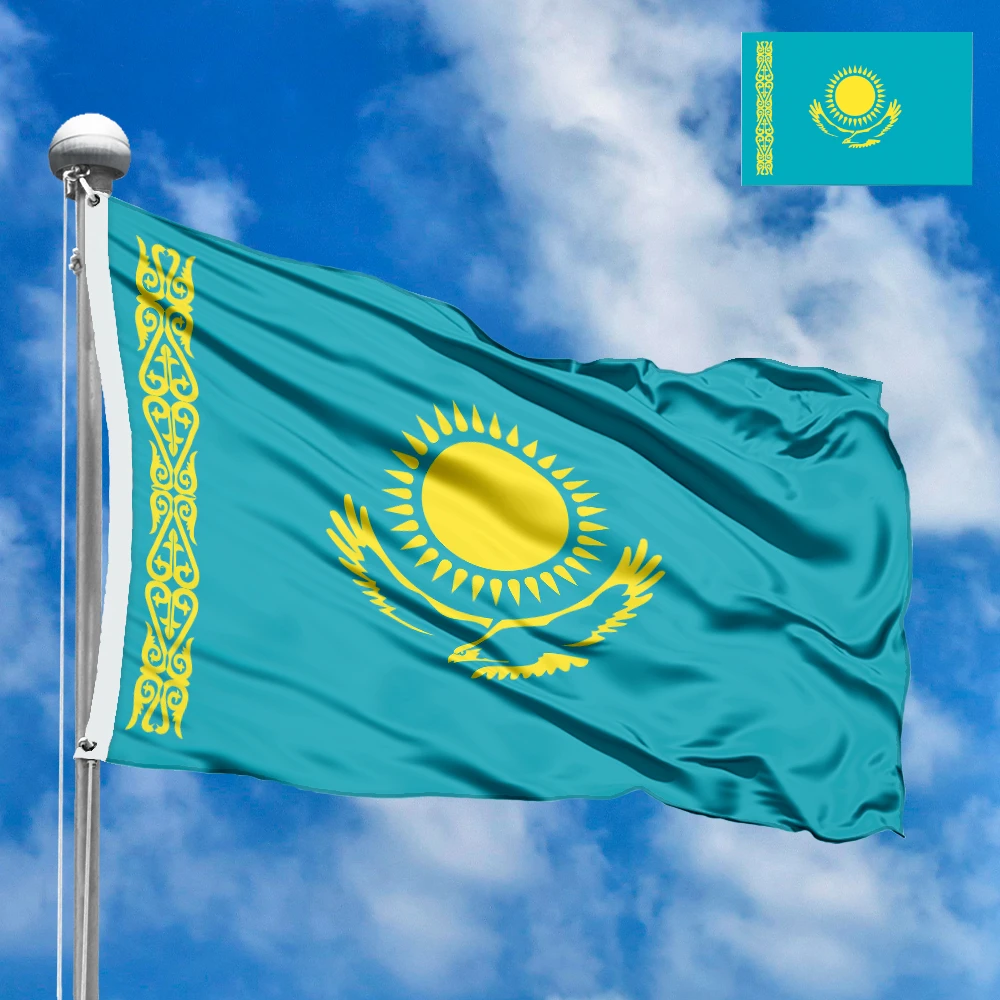

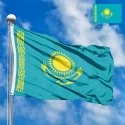
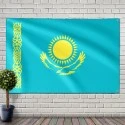
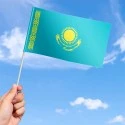

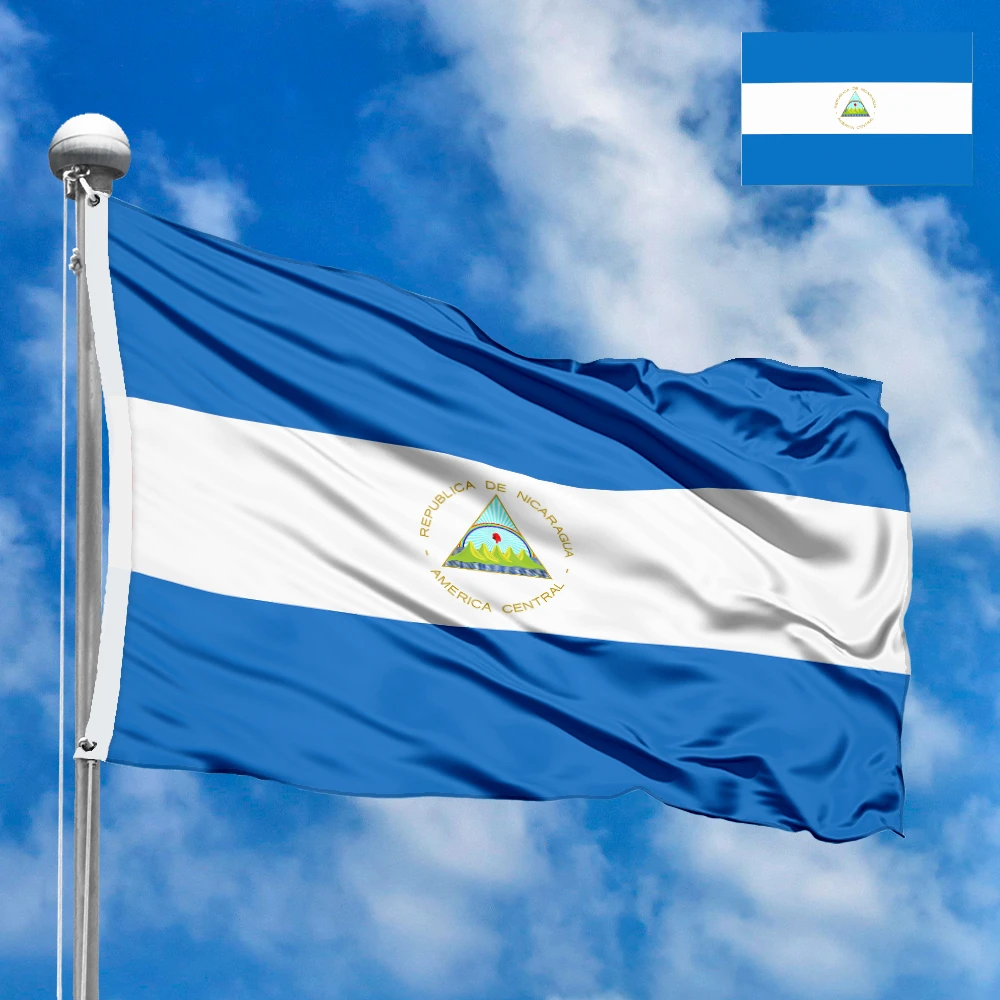
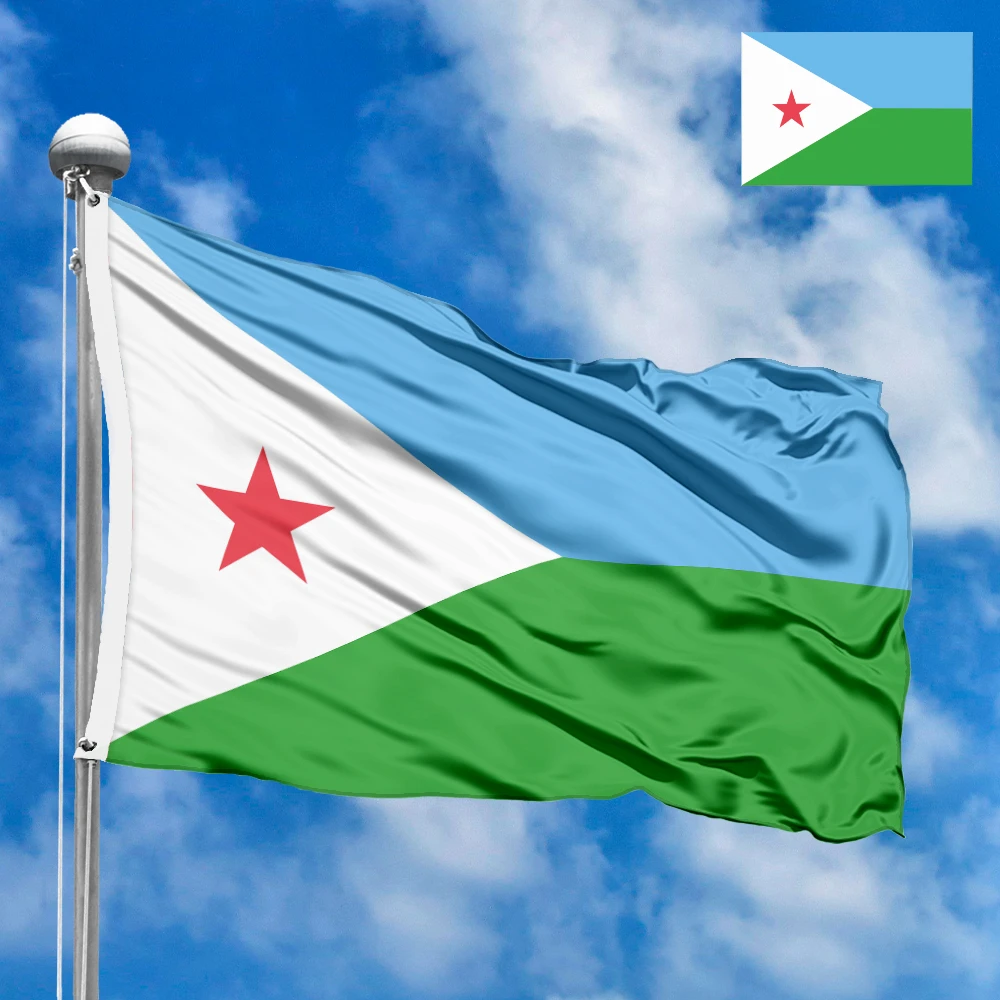
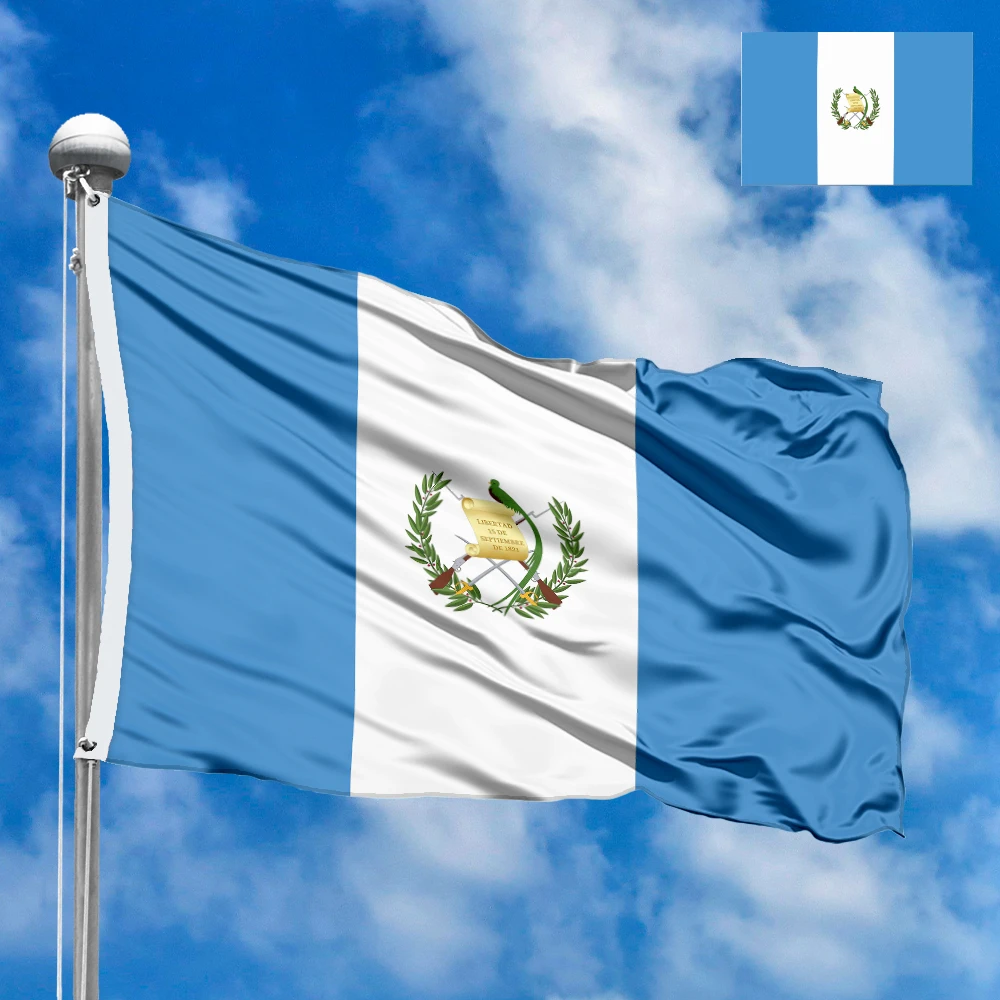




 Waving flag
Waving flag
 Sizes:
Sizes:
 Round flag
Round flag
 Sizes:
Sizes:
 Rectangular flag 2:3
Rectangular flag 2:3
 Sizes:
Sizes: